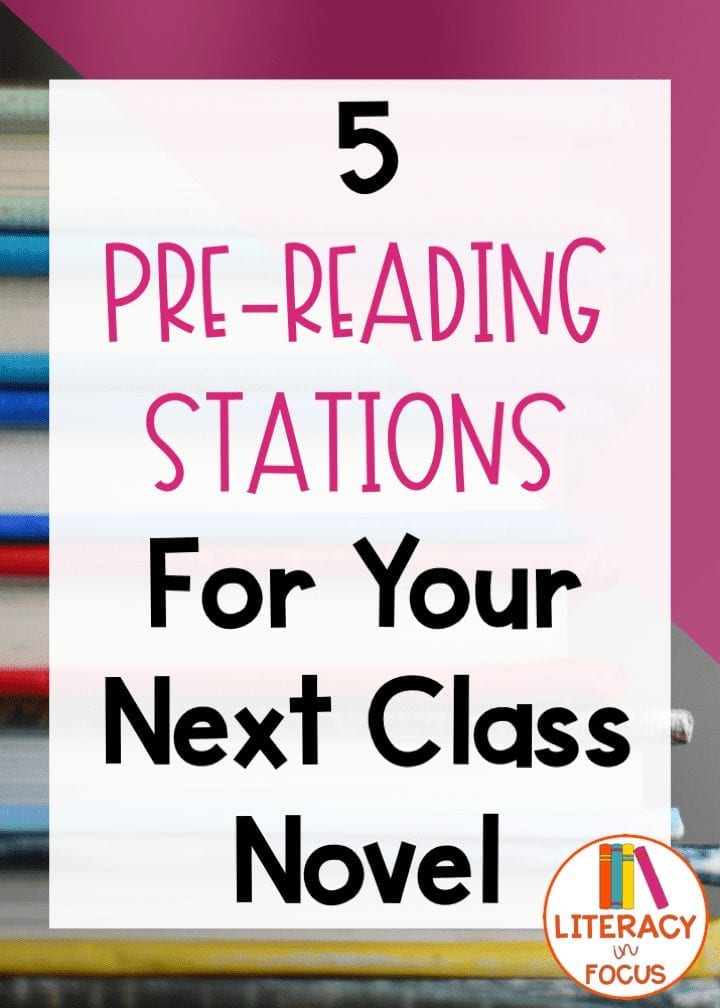As teachers, we mostly likely have a deep connection and interest in books. Although our love of reading may be strong, it can be difficult to impart that on our students. Losing the battle before it has begun is not something we want to happen when it comes to engaging young readers in a new novel. Even the most reluctant readers can be encouraged and engaged in a book before reading the first page. The five pre-reading stations described below will get your students up, moving, and interested in your next class novel.
Preview
The previewing station provides students with a taste of what is to come. In order to effectively preview the text, students will need to read the title and describe the images, graphics, or artwork on the front cover. Taking it a step further, students will need to infer from the title and cover art what they think the novel may be about. Taking a picture walk, as it is sometimes called, may spark interest and generate motivation in even the most reluctant of readers. Previewing the text is an important step because it activates background knowledge and prepares students for making deeper connections.
Identify
The next aspect of the text students explore is the author and copyright. Students may recognize the author and make a connection to his or her other works. Encouraging students to read about the author may help them understand the motivation behind writing the book. It may also give them clues about what the book may include. Additionally, noting the copyright date will give students a frame of reference for the time period in which the book was published. Students will have a better understanding of the content or purpose if they are able to reference the time period in which the book was written.
Predict
The prediction station gives students a chance to learn more about the structure of the book and what they can expect based on that structure. Students determine if the book is fiction or non-fiction, describe how the book is organized, and, if applicable, peruse the table of contents. Hopefully, understanding the text structure will arm students with skills needed to formulate their own ideas of what the book may include. Readers who can identify the structure of a text are better able to locate the information they need for successful comprehension.
Summarize
The summarizing station requires students to read the summary of the book on the back or inside cover of the text. Based on the summary reading, students generate their own who, what, when, where, and why questions. Generating questions before reading will prime students for a meaningful reading experience. When students begin reading with big ideas in mind, they are more likely to continue to ponder these concepts as they read. Self-questioning strategies focus the students’ attention on understanding and connecting with the text. Teaching students these skills is important because a strong reader will inherently ask questions and think about the text as they read, leading to an overall increase in reading comprehension and a more enjoyable reading experience.
Connect
The final pre-reading station encourages students to make text connections. Students examine the topic, apply personal experience, and brainstorm other works they are familiar with that may align with the topic being addressed in the book. True learning occurs when students make connections. It is important for students to connect with the book in some way before reading the first page. Connecting with the book may help the student become invested in what he or she is about to read. Teaching students to connect the topic to themselves, another text, or something in the world will help to ground them when they begin reading.
The pre-reading stations listed above will provide students with just the right amount of scaffolding to be successful and engage with the text on their own terms. We want students to be able to independently draw their own conclusions about a book prior to reading the first page. Overall, the ultimate goal is for students to be able to implement the pre-reading strategies listed above independently and strategically.
Are you ready to implement the five pre-reading stations in your classroom?


